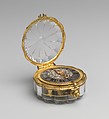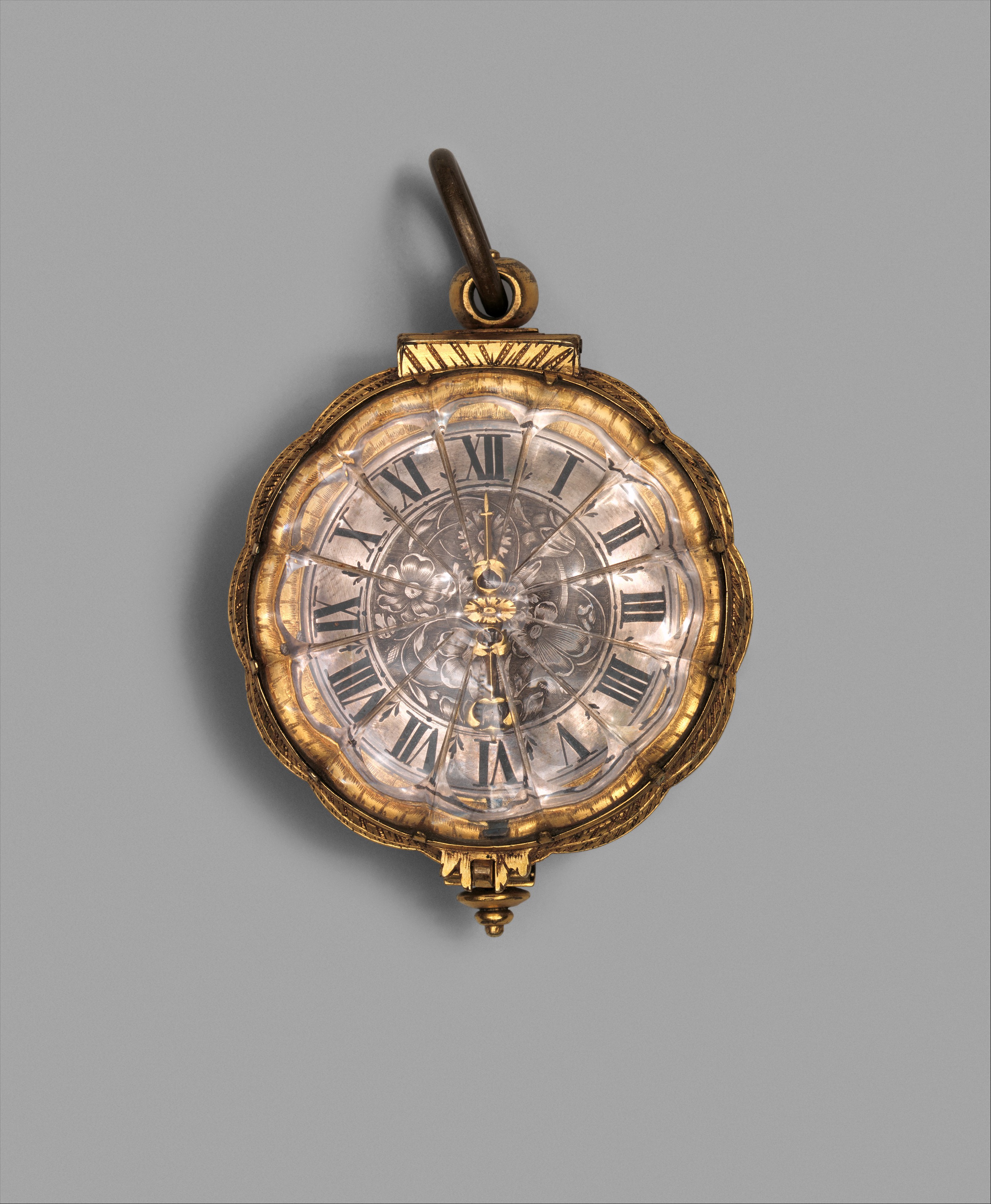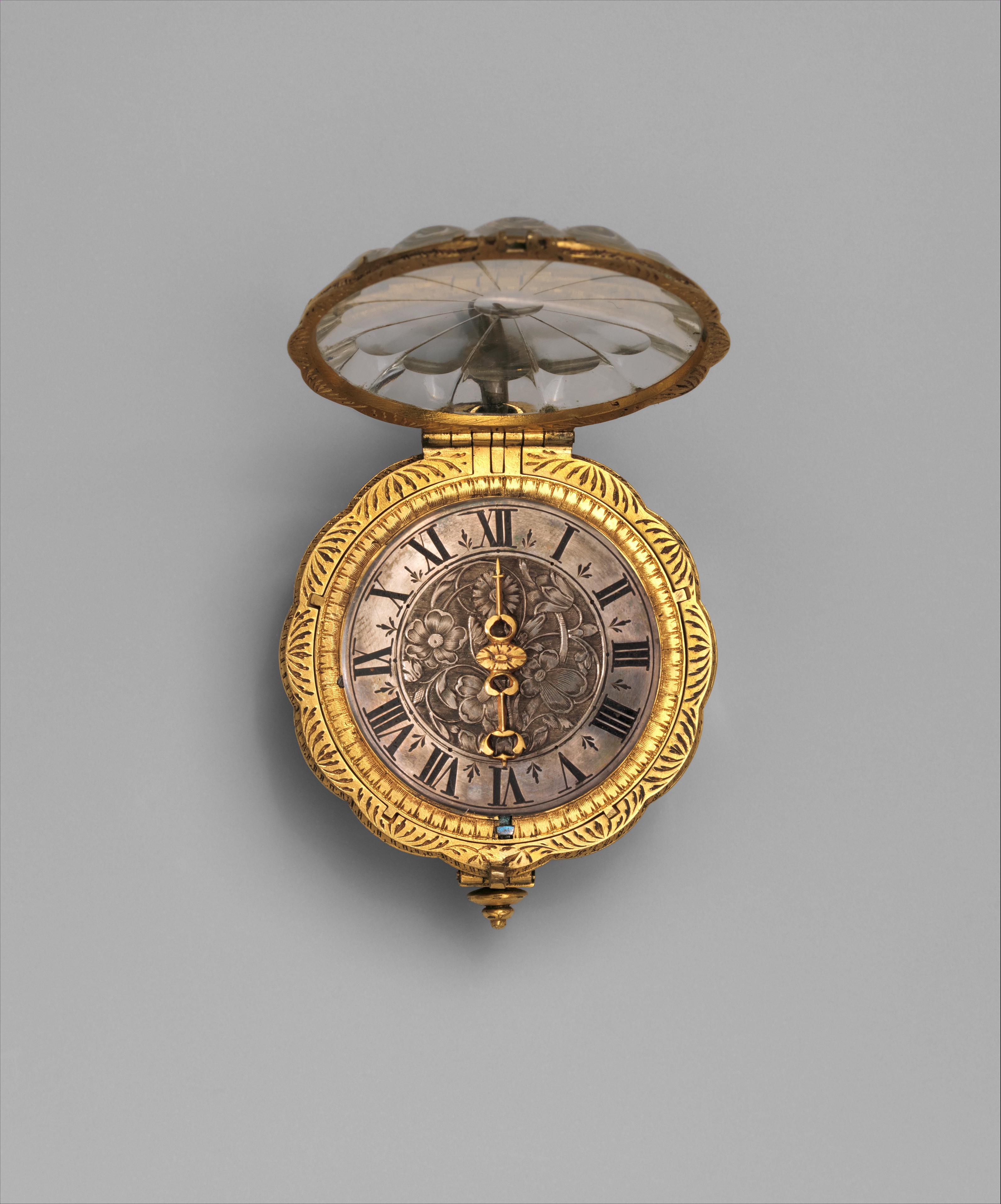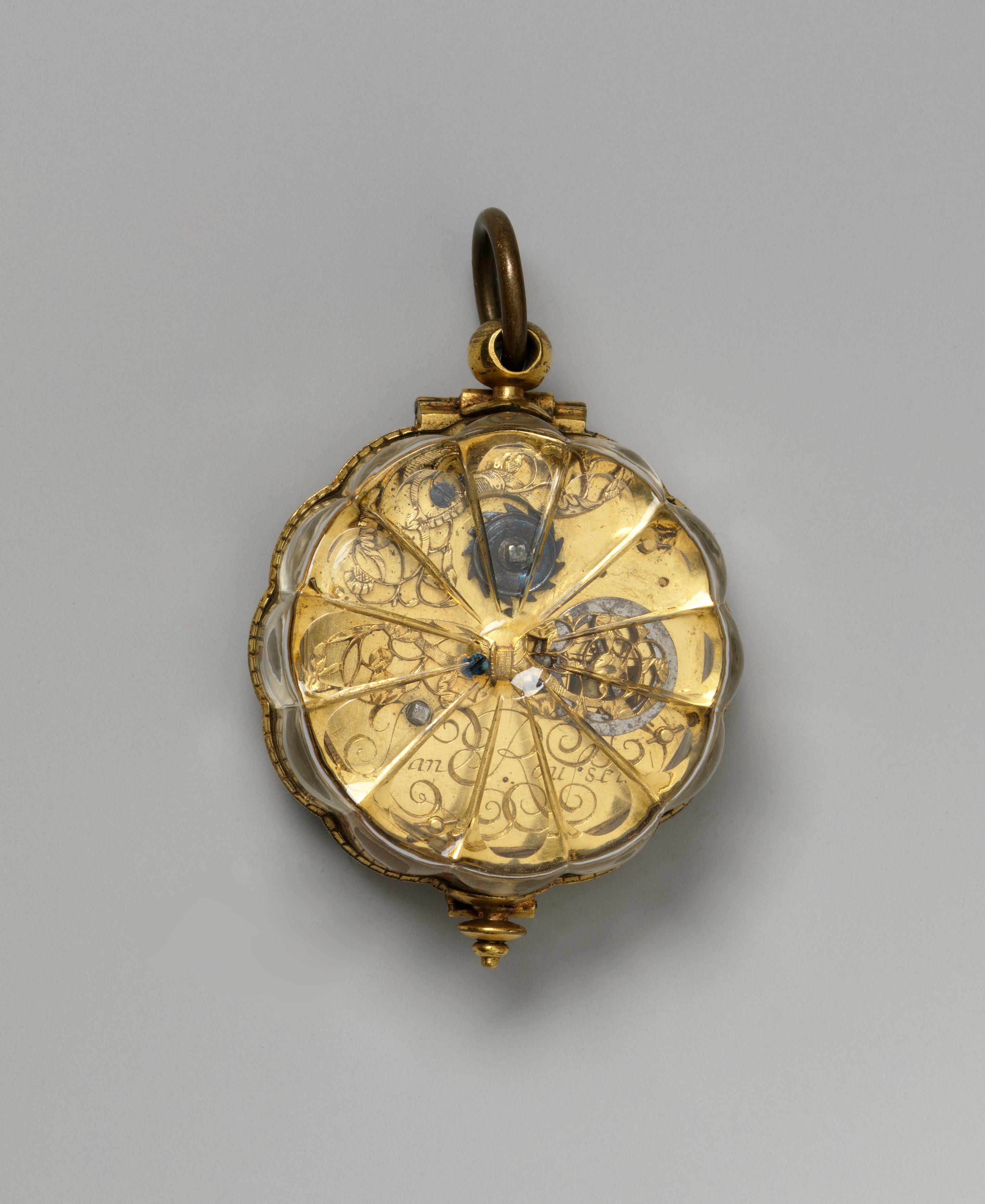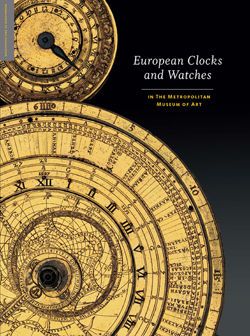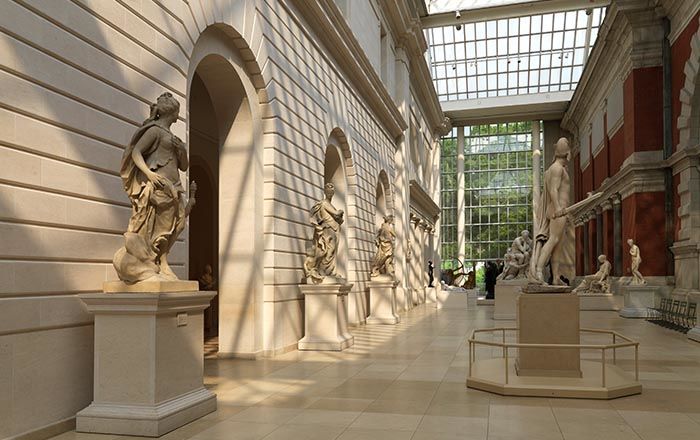Watch
Watchmaker: probably Jean Rousseau the Younger Swiss
Not on view
It has been said that French Protestants who were fleeing religious intolerance in their native country brought the craft of watchmaking to Geneva in the seventeenth century. Some of them had already settled in the city by the sixteenth century, especially in the years following the Saint Bartholomew’s Day Massacre in Paris in 1572.[1] It is certain that by 1564 watches were being made and sold in Geneva,[2] whether by French émigrés or native-born Genevans. French goldsmiths and lapidaries had fled to Geneva as well. Although seemingly related skills were needed for the creation of small precious objects, goldsmiths and lapidaries were considered separate occupations from watchmakers until 1625, when a city ordinance expressly permitted cooperation between the crafts to make watchcases. In addition, Geneva watchmakers were permitted to make their own watchcases if they chose to do so.[3]
Thus, Geneva, which had had a strict code of sumptuary laws forbidding the wearing of jewelry since the establishment of theocracy in 1541 by John Calvin (1509–1564), found itself in the seventeenth century as the prime source of jewel-like timepieces made of precious and semiprecious materials. Small mechanisms in cases shaped like crosses, human skulls, fleurs-de-lis, stars, hearts, seashells, tulip buds, dogs, doves, hares, and lions became a specialty; these pieces have become known as form watches. The Metropolitan Museum has a tulip bud–shaped watch with a movement by the well-regarded watchmaker Jaques Sermand (1595–1651),[4] and a number of shell-shaped and crossshaped watches in rock crystal cases. One of the earliest cross watches (fig. 26) contains a movement by Anthoine (Antoine) Arlaud (1590– after 1641).[5] Arlaud, born in Maringues in the Auvergne region of central France, became a burgher in Geneva in 1617 [6] and the founder of a dynasty of watchmakers. From a contract signed in 1631, Arlaud is known to have been the supplier of watches to the merchant and clockmaker Pierre II Cuper (1604–active in Constantinople 1634), in Blois, France, for further shipment and sale in Constantinople.[7] Although these watches were not form watches—they were to be oval and made of silver—the contract nevertheless implies the existence of an extensive export trade. Cuper would later join his uncle Michel Cuper (died 1633) in Constantinople.[8]
The Museum’s Arlaud watch is housed in a gilded-brass case that is set with eleven separate pieces of faceted rock crystal. A twelfth piece made of cross-shaped glass appears to be a skillful replacement for the original back cover of the case. There is no casemaker’s signature or mark, and his identity will probably never be known, but the small pieces of rock crystal and their separation by the metal frame of the case might suggest an early date of about 1620–30 for the object.
Rock crystal, a form of colorless, transparent quartz, was readily available in the seventeenth century from sources in the Swiss Alps. In 1650, at the height of its popularity as a medium for watchcases, Constantijn II Huygens (1628–1697) wrote from Geneva to his brother, the Dutch mathematician Christiaan, to report that he had just bought a watch “à la mode” with a case made from rock crystal that permitted a view of the movement such as one would see if the case were made of ice.[9] In any event, by 1650, such watches had become, along with form watches, another Genevan specialty. Huygens bought his watch at its place of origin, but such watches were exported both as complete pieces with movements signed by Genevan watchmakers and as empty cases for use by foreign watchmakers. Records for this trade include three crystal cases for “clock watches” ordered in 1623 by Pierre Lourteau (or Louteau; active 1603–28), a watchmaker in Lyon, France, from the Genevan lapidary Paul Tillier.[10]
The trade can be further inferred from an example provided by a watch in the Museum’s collection with a movement signed “Jean Rousseau” (probably Jean Rousseau the Younger, 1606–1684), and the great-grandfather of the philosopher Jean-Jacques Rousseau (1742–1778). Part of a series that has both circular and oval cases, this watch consists of a single piece of hollowed-out rock crystal with a second piece set in the hinged cover. Both case and cover are cut in a lobed pattern that radiates from a central lens. The twelve lobes of the cover are carefully spaced so that the numerals on the dial of the watch can easily be read through the crystal. The pattern on the back of the case is sufficiently reticent so that the back-and-forth movement of the balance, as well as the finely pierced and engraved ornament of the balance cock, can be admired without opening the case. The dial plate, with a decoratively chased border, carries a large, pinned-on, silver dial with robust flowers in the style of the French engraver Jacques Vauquez (1621–1686), framed by a chapter of hours with the roman numerals I–XII for the hours and sprigs for the half hours clearly marked in black.
The pre–balance spring movement of the Rousseau watch consists of two circular, gilded-brass plates that are held apart by four baluster pillars and contains a train of three gilded-brass wheels ending in a verge escapement with a steel balance. Its fusee is cut for thirteen turns of gut line, which provide approximately twenty-six hours before the mainspring needs rewinding. The back plate carries a ratchet and click set- up regulator for the mainspring. The cock for the verge, with its pierced and gilded strawberry-leaf ornament, is screwed to the plate. The winding square projects through the plate below the tail of the cock and just above the name “Jean” in the floridly engraved signature of the watchmaker. Details such as the ratchet wheel of the setup, the ornamental screw for the spring of the case bolt, and the bolt are constructed from blued steel. All are visible through the crystal.
A nearly identical watch, also signed “Jean Rousseau,” is in the collection of the Musée du Louvre,[11] and closely comparable watchcases by Joost Silleman of Leeuwarden in the Netherlands[12] and J. B. Gebhart (or Gebhardt; active 1661) of Strasbourg [13] (then part of Germany), one by the native Genevan Denis Bordier (1629–1708),[14] and an oval version used by J. Hediger of Zug in Switzerland,[15] are also in the Louvre’s collection; there must have been quite a few of these watches. The fact that they were considered treasures can be inferred from the presence of one of them that is displayed on a golden stand in a painting of an imagined Kunstkammer, a cabinet with shelves full of examples of the wondrous products of nature, as well as the ingenious creations of man. The painting, dated 1666 by the artist Johann Georg Haintz (or Hainz or Hinz; 1630–1688), working in Altona and Hamburg in North Germany, records a twelve-lobed Swiss watch that must have belonged to the artist or, more likely, to a member of the Danish royal family for whom the canvas was painted.[16]
The Rousseau watch in the Museum’s collection is in excellent condition, missing only a spring for the set-up regulation. It is probably the watch that was sold in Paris in 1891 from the collection of Georges- Louis-Claude Lebeuf, comte de Montgermont.[17] This sale also included the Jacques Goullons (or Coullons; recorded in 1626; active in Paris ca. 1640–60, died 1671) watch with a portrait of the young King Louis XIV that is now in the Robert Lehman Collection in the Metropolitan Museum,[18] and a cross-shaped rock crystal watch by Pierre-Martin Scheult of Paris (active 1654–57), later given to the Museum by J. Pierpont Morgan.[19] Along with the Arlaud watch, the Rousseau watch was purchased by Morgan from the Frankfurt am Main and Berlin collector and dealer Carl H. Marfels.
Notes (For key to shortened references see bibliography in Vincent and Leopold, European Clocks and Watches in the Metropolitan Museum of Art. NY: The Metropolitan Museum of Art, 2015)
[1] Patrizzi 1998, pp. 17–18.
[2] Jaquet and Chapuis 1970, p. 18.
[3] Patrizzi 1998, pp. 36, 45.
[4] Acc. no. 17.190.1015. See Jaquet 1938; Jaquet and Chapuis 1970, pl. 5.
[5] Acc. no. 17.190.1610.
[6] Patrizzi 1998, p. 75.
[7] Jaquet and Chapuis 1970, p. 27.
[8] Fourrier 2000, pp. 18–19.
[9] Constantijn Huygens to Christiaan Huygens, Jan. 5, 1650, Municipal Archives, Amsterdam, quoted in Huygens (Christiaan) 1889, suppl., p. 570, no. 69.
[10] Quoted in Jaquet and Chapuis 1970, p. 22.
[11] Inv. no. OA 7065. See Cardinal 2000, p. 86, no. 56.
[12] Musee du Louvre, inv. no. OA 7073. Ibid., p. 146, no. 131.
[13] Musee du Louvre, inv. no. OA 7051. Ibid., p. 86, no. 57.
[14] Musee du Louvre, inv. no. OA 7064. Ibid., p. 85, no. 54.
[15] Musee du Louvre, inv. no. OA 7067. Ibid., p. 88, no. 61.
[16] Now in the collection of the Kunsthalle, Hamburg (inv. no. 435), and said to be signed “Georg Hainz Altona fecit Ao 1666.” See Hans Werner Schmidt in Hamburger Kunsthalle 1995, p. 131, no. 227; Koeppe 2008, pp. 62–63, and p. 65, fig. 66. See also Raulet 1999, p. 143, for a detail of the painting showing the watch.
[17] Galerie Georges Petit 1891, p. 56, no. 174, ill.
[18] Acc. no. 1975.1.1244. See Vincent 2012, pp. 78–83, no. 21.
[19] Acc. no. 17.190.1621.
This image cannot be enlarged, viewed at full screen, or downloaded.
This artwork is meant to be viewed from right to left. Scroll left to view more.
